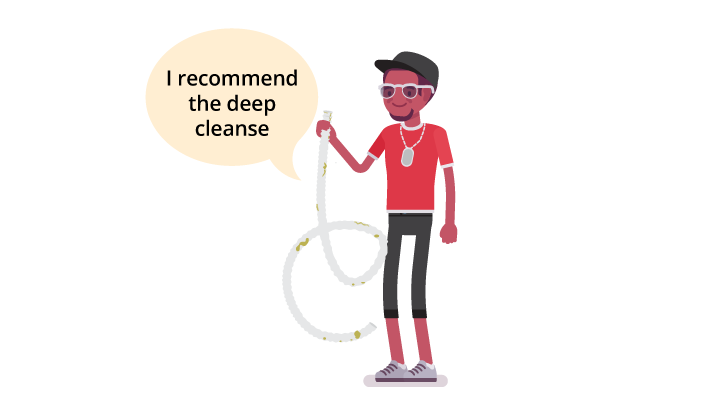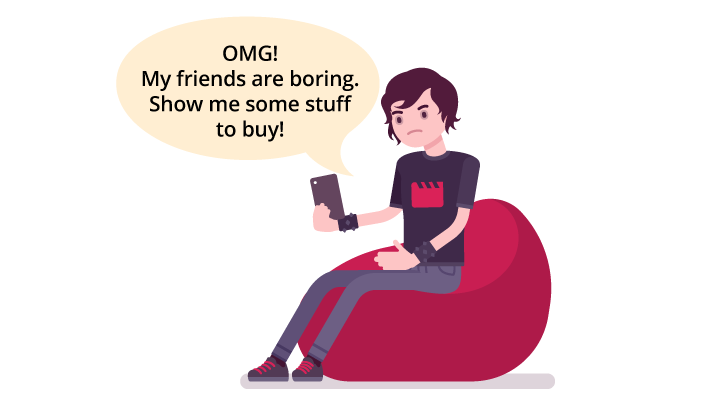Is Vero The Next Big Thing In Social Media?
Is Vero the next big thing in social media? Can brands be on Vero and should you bother creating content for your company on this new viral platform? Vero is an Instagram alternative offering a zero advertising, zero algorithm social media solution. Find out what all the hype is about.
Those of you that enjoy riding the unpredictable and sometimes nauseating tide of new technology may have heard of VERO, a new social network sometimes referred to as “The New Instagram”.
That description is perhaps accurate only in describing the companies sales pitch rather than the app itself. It does have similar features to Instagram’s photo and video sharing, but the similarities stop there. More on that later.
It’s also not exactly new, having skulked around in the darker recesses of the app store since 2015. However there was an explosion of interest in February 2018 when VERO went viral and shot up to the top spot in the US app store. Impressive stuff.
Alas with such glory, one often must bare a crown of thorns, as the new found fame of the app caused their servers to blow their load, leaving this rising star looking a little sheepish to say the least, with functionality dropouts and full on meltdown giving the slew of new users a shaky start.
This new found publicity also raised questions about the app itself, and the CEO’s ties to a company accused of the of exploitation of its labour force. If you enjoy this kind of scandal then feel free to indulge in some of the outraged Youtube celebrities gabbling on about it online.
What is VERO, and what’s all the hype about?
From the app’s manifesto video it’s pretty clear that they are trying to offer a solution to millennial social media users who are nostalgic for the glory days of pre-advertising Instagram and Facebook. A time when things were simpler, and your feed wasn’t pumped full of ads like a supermarket chicken is filled with hormones. Enjoy your dinner.

VERO are also adding a few sneaky elbow digs at Instagram’s content algorithm updates, offering strictly chronological posts in a bid to steal some of the frustrated fleeing users from the world’s most popular photo app.
It’s the hook that got them shooting up the app store listings, so definitely not a feature to be sniffed at. That and the glossy, and pretty well produced sales pitch video that addresses the frustrations of over commercialised social media and claims to offer a solution.
There are also some interesting privacy restrictive features, allowing you to share on either to close friends, friends, acquaintances and followers.

This tiered system appeals to the privacy sensitive user, which is actually quite a bold feature that sets Vero apart from its mainstream rivals. Thumbs up for that.
The app also divides post types into different categories, giving you the option to share photos, links, music, movies/shows, books or places from your profile. Once published your recommendations or activities are neatly saved into the relevant collection on your profile, and can be browsed by those in the audience that you have restricted the content to.

This collection approach makes for quite interesting browsing, as you can get a pretty intimate projected image of a person from their profile, seeing not only what they have to say in images, but also what they were listening to, where they have been, what they were eating etc.
It’s even a little scary, as the whole platform works in chronological order. I almost felt like I should swipe over again to get to the bodily functions collection to see exactly what the stool consistency was of the user I was stalking. Still it was the account of some fitness guru, so with all the sweaty deadlifting in vests it’s not surprising that my mind strayed onto bodily fluids.
Saying that, the discovery features are a bit difficult to get your head around. You can use the search features to find other users, and follow certain hashtags, but if you wanted to browse music or movies you have to create a post to see any content that wasn’t already shared with you.
It’s all very appealing on the surface, and definitely taps into a timely demand for ad free social networks, but unfortunately that leaves them with a business model that is difficult to monetise.
Enter subscriptions.
Is Vero free to use?
In their press releases, Vero have been very clear that they will move towards a subscription model. The point being that for the pleasure of an advertising free social media network, you will have to pay a monthly fee just like your Spotify or Netflix account, and have access to … well your friends.
Currently however the app is free to use in an offer for the first 1 million users which has been extended indefinitely. Now’s the time to sign up, because while the offer is running currently, they are very clear that the app will become a subscription service in the future.

This is where the problem arises for me personally. While I agree that the premise of an ad free social network is a good one, there’s a fundamental difference between paying for a subscription to access music, TV and film all produced on large budgets, and to access the internet pollution of baby photos and wedding proposals that fills my Facebook newsfeed.
Come to think of it, for my monthly fee I’d rather keep the ads for stuff that I actually might like to buy, and flush all the meaningless drivel about how baby Quentin just sucked his first rusk biscuit.
Unfortunately for Vero, I think I am not alone, and while in focus groups potential customers might claim to be willing to pay a monthly fee to join an ad free social network, the reality is they won’t pull the trigger when there are more mainstream (albeit flawed) alternatives out there for nothing.
I’ll admit the above is speculation, and you’re entitled to your opinion too, so if you’re ready to shell out a few bucks per month then by all means give it a go
. I’m just not sure that the subscription fee will work out without a more concrete service offering.
Can Brands Be On Vero?
With all of that ad free visionary approach to social media chat spewing ironically out of the “How to appeal to millennials” marketing bible, you could end up thinking that Vero is a hostile place for those looking to grow their business.
However, brands can be on Vero and although no advertising is available, you can create content until your heart is content by just creating profile as if you were a regular punter.
The other option is to become a Vero partner although there’s not much information about how to do this on the app. It’s likely that they are looking to strike deals and offer custom features to big brands that will their name on the platform in exchange for a spot on the landing screen. Wait a minute… isn’t that advertising? Can’t be.
There definitely is a commercial side to the app which could be interesting for some brands, as they are allowing businesses to sell their products directly on the platform. This isn’t really a new or revolutionary idea as Facebook have been developing their product catalogue features for a while now, and have experimented with hosting a checkout on the platform in the past.
Any transactions taking place on the platform will be subject to a fee and thus cash flows into Vero’s pocket. This system, paired with the absence of advertising makes it challenging for Vero to incentivise brands to make money on the platform, as they will need to drive traffic through other means (such as Facebook advertising!) and then make sales that include a so far undisclosed transaction fee.
If you are driving traffic to an external source, then why not to your own website where you can keep all the revenue?
I sense that this issue is actually just the tip of a rather ominous iceberg blocking the path of the new app. The shopping features on the platform, and advertising material (aside from the promotional video) seem pretty squarely focussed on the luxury goods market.
The tap to pay feature is illustrated on the website using the example of someone buying a £179 ($317) waistcoat! That says it all. The kind of user they expect to use their shopping features are those ready to make an impulse purchase of a high ticket item, on a mobile device with the tap of an Apple Pay logo.
After having worked with a lot of e-commerce brands, both luxury and not, I can tell you that the purchase funnel can be a lot more considered than you might expect. While some of these gullible, entitled or just lazy users undoubtedly exist, it’s not a foundation upon which to grow shopping side of the platform, and Vero will have to offer a lot more than just convenience and a glossy magazine style look to make this part of the app a success.

I wish that I could have analysed the shopping experience in more detail, but unfortunately not one single product in the app would load! I suppose that this is due to a server issue, or one of the many bugs logged by users so far, but perhaps they have wasted their moment in the viral spotlight with silly issues like this.
Having no advertising platform also can be a bit unfair for new businesses trying to get a foothold on the platform and get their products out there. While large brands will attract sales through existing awareness, smaller traders or artists have no clear way to use the platform to grow their business, and it’s difficult to see why they would bother if Facebook and Instagram offer an easier route.
In fact it seems to me that Vero are going straight for the big boys, with a music partnership with iTunes and Apple pay, and the emphasis on how we the lucky user can access “amazing” content created by brands like GQ and … well, that’s the only one I’ve heard of before.

For a platform that puts a no advertising policy way up front in its communications, there sure is an awful lot of talk about brands on the website. Plus there seems to be a space on the landing page of the app for “CURRENTLY ON VERO”, “PRODUCTS” and “FEATURED USERS”. It’s not really clear why these are promoted, but it certainly feels a bit like a space for sponsored content. Either that or something decided by an algorithm, or just a good old shady partnership.
While I totally understand the desire for a social media platform free from ads, it can actually end up being less transparent for the user base. There’s no doubt that where the user base exists, corporate influence will find a way to creep in.
In the case of Vero, there’s one clear route through which this could already happen.
Using Vero for Influencer Marketing
It’s important to understand that Vero is a platform based on the success of Instagram, which gave rise to the tidal wave of influencer marketing.
The concept of Vero is focused on social recommendations, and therefore gives popular users the chance to use their super powers for pure personal gain and sell the rest of us losers all kinds of aspirational stuff.
The idea of all encompassing, private and personal recommendations gives influencers a flexible platform on which to expand their taste making to all manner of markets. Vero have latched onto the trend that fans of Kanye won’t just buy trainers and albums, but that they will get a kale and sulphuric acid enema if he tells them to.

Despite the “no ad” policy, the nature of the platform will attract brands to collaborate with power users, and kind of undermine the premise of the platform. This is a little behind the times as Facebook and Instagram have already been through years of unofficial sponsored content, and the consensus has already shifted to declare that officially uncool and punishable by algorithm.
Vero’s lack of an algorithm kind of removes that spam control feature from the platform, and it’s easy to see it becoming overrun with thinly veiled sponsored content as the user base grows.
While I’m sure that the official Vero line is that they don’t approve of advertising of any sort on the platform, they won’t complain about influencers recommending products that could lead to on-platform sales that create commission revenue for them.
Despite the above criticisms, the strength of the app is the only real acid
test for success. If they succeed in providing a great user experience that attracts a big enough user base, Vero will become a legitimate platform for influencer marketing. It all hangs on the success of the app!
Free from Ads, but Not Free From Commercial Influence
Personally, as you may have guessed from the general tone of this article, I find the no advertising concept a little farcical. Having no transparent ad platform, but still offering brands a voice on the channel means that sales are going to be driven through large partnerships or behind the scenes marketing.
In fact, as there is no ad revenue generated from your average Joe business, Vero is even more reliant on the support of its large partner services to incentivise their customers to use the app. While this might not be necessary to drive the initial user base, it will be to scale it into a viable Instagram competitor.
Perhaps opening up a bit about other avenues to monetise the business, promoting it as a great platform for influencers, and supporting some sponsored content formats might extend their lease a bit in the long run.
What’s the Verdict?
The optimistic view is that they will grow the app through great features and a good user experience, but that expectation has been sullied by the poor technical performance leading to an app store rating of 2.3 with these glowing top three reviews.

Overall the feedback is that people like the concept but not the execution. While the interface is quite appealing, the fact that half of it doesn’t work is not. This is just a temporary issue.
However more critically for brands, the fact that there is already a commercial spin on the app that doesn’t offer any concrete advantages to incentivise sales on the platform makes me wary of its commercial value or longevity.
Sometimes the app has really delightful features. I love the movie recommendations, which offer pretty rich information on each film, with options to browse deeper into the cast, synopsis and more. This is not something that I’ve seen before on a social media network and a simple but innovative addition.

I’m sure if they can iron out the technical issues, that the app could provide a great user experience that attracts users sick of Instagram’s shortcomings. Focussing on that for the time being will take them a long way.
The commercial features still have a long way to go, and I’m not convinced by the no advertising policy. It has to be monetised at some point, so why steer away from the model that has made all other networks successful?
While I like the subscription model for accessing premium content, I don’t see it becoming successful for access to a social media platform. It’s like they are trying to get mass market appeal through a strategy of exclusivity.
The app actually left me with a slightly revelatory experience, in which I actually started missing sponsored content! Part of the appeal of Facebook and Instagram are that the never ending newsfeed provides an endless stream of procrastination, as we’re spoon fed the warm diarrhoea of dog memes, fake news and advertising.

Effective sponsored targeting certainly drives sales, but it can also lead to discovery for the user. For example I love getting notified of the latest films showing at my local independent bar/cinema. I wouldn’t know it existed without sponsored content!
I have a sneaking suspicion that I’m not alone in this feeling, and that taking advertising away from users will actually lead them to return to the trashier option. Even though Mozart is probably more interesting than Iggy Azalea’s latest cultural appropriation, it doesn’t mean that it gets more streams.
Do we think that Vero will be the next big social media network? Probably not, but if the folks at Facebook and Instagram are smart they will take notice of its brief Viral explosion and start drafting a few feature changes.







